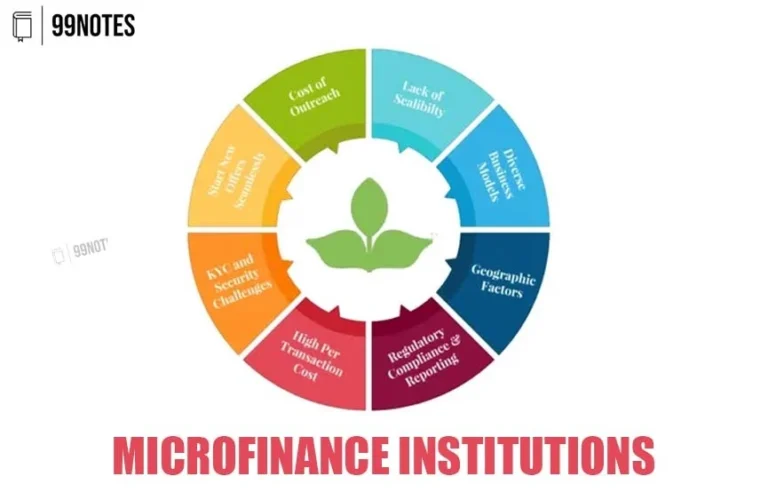DEVELOPMENT INDUSTRY & GOVERNANCE
- Interplay between Development and Governance
- Actors in the Development Industry
- Accountability and Ethics in Development Sector
- Criticism of the Development Industry
- Best Practices & Success Models
- Digital Transformation and Development Governance
- Regulation and Oversight Mechanisms
- Way Forward
- Related FAQs of DEVELOPMENT INDUSTRY & GOVERNANCE
India’s path to inclusive and sustainable development is deeply intertwined with industrial growth and effective governance. While development ensures improvement in the quality of life, industry acts as the backbone of economic progress by generating employment, enhancing productivity, and fostering innovation. From traditional manufacturing to cutting-edge services, the industrial sector plays a pivotal role in reducing poverty, bridging regional disparities, and uplifting marginalized communities.
 However, the benefits of industrialization can only be fully realized through transparent, accountable, and citizen-centric governance. Effective governance ensures that industrial policies are inclusive, environmentally sustainable, and aligned with developmental goals. It acts as the link that harmonizes the interests of the state, market, and society—thereby facilitating balanced growth, social justice, and long-term national prosperity.
However, the benefits of industrialization can only be fully realized through transparent, accountable, and citizen-centric governance. Effective governance ensures that industrial policies are inclusive, environmentally sustainable, and aligned with developmental goals. It acts as the link that harmonizes the interests of the state, market, and society—thereby facilitating balanced growth, social justice, and long-term national prosperity.
The rise of this industry reflects the changing nature of governance where collaboration, specialization, and innovation are key to solving complex development challenges.
Interplay between Development and Governance
The development industry significantly contributes to governance by complementing the state’s role in delivering welfare, ensuring social justice, and promoting inclusive growth. Its actors often bring in innovation, accountability, and responsiveness in service delivery and reform.
- Role in Welfare Delivery, Social Justice, and Inclusive Growth – Development actors implement programs targeting poverty, gender equity, tribal welfare, and marginalized communities, aligning with SDGs and rights-based approaches.
- Public-Private Partnerships (PPPs) – Development firms and NGOs collaborate with governments for infrastructure, livelihoods, and social services, combining efficiency with public interest.
- E-Governance and Civic Tech – The use of ICT tools by development professionals boosts transparency, digital outreach, and citizen engagement in governance.
- NGO-Government Collaborations – Joint efforts in schemes like Swachh Bharat or POSHAN Abhiyaan enhance last-mile delivery, monitoring, and behavioral change.
- Democratic Accountability – Through tools like RTI campaigns, social audits, and grievance redress platforms, the sector fosters accountable and responsive governance.
- Decentralization and Local Participation – By empowering PRIs, SHGs, and local volunteers, development professionals deepen grassroots democracy and participatory planning.
This synergy ensures that governance evolves from top-down bureaucratic control to a more collaborative, transparent, and citizen-centric process.
Actors in the Development Industry
The development industry operates as a multi-actor ecosystem, where different stakeholders bring distinct mandates, resources, and capabilities. Their collective engagement shapes welfare outcomes, policy direction, and institutional reforms.
- Government Agencies – Ministries, departments, and development authorities implement flagship schemes, create enabling policies, and monitor outcomes through national and state-level programs.
 Corporate Social Responsibility (CSR) Bodies – Mandated under Section 135 of the Companies Act, these bodies fund social development initiatives in education, health, environment, and skill-building.
Corporate Social Responsibility (CSR) Bodies – Mandated under Section 135 of the Companies Act, these bodies fund social development initiatives in education, health, environment, and skill-building.- International Donors – These institutions provide technical assistance, funding, and global best practices, often influencing reform-oriented development agendas.
- INGOs and NGOs – They play a key role in project execution, community mobilization, research, and advocacy, often bridging state-market-society gaps.
- Consulting Firms – Private players like Deloitte, PwC, and Dalberg contribute through policy design, implementation support, capacity-building, and impact assessments.
- Think Tanks and Research Institutions – Organizations like NITI Aayog, Centre for Policy Research, and Brookings India provide evidence-based policy inputs, innovation models, and strategic evaluation.
Together, these actors form a dynamic network that enables the delivery, monitoring, and reform of governance and development systems.
Accountability and Ethics in Development Sector
As the development sector becomes more institutionalized and globally integrated, concerns over ethics and accountability have taken center stage. Ensuring transparency, community participation, and unbiased evaluations is essential for building trust and sustaining impact.
- Transparency and Conflict of Interest – Lack of clear financial disclosures and overlapping interests between donors and implementers weaken institutional credibility. Ethical dilemmas arise when personal or organizational gains compromise developmental objectives. Mechanisms like financial audits and disclosure norms are necessary to prevent such distortions.
- Agenda Distortion – Donor-driven agendas may push projects that do not reflect local needs, leading to ineffective or unsustainable outcomes. This undermines the principle of community ownership. Ethical development must prioritize contextual relevance over global or corporate preferences.
- Community vs Donor Orientation – Projects often prioritize donor requirements over grassroots feedback, which can alienate beneficiaries. A bottom-up approach ensures interventions are demand-driven, culturally appropriate, and inclusive. Ethical practices demand that communities are partners, not mere recipients.
- Social Audits – Instruments like social audits empower citizens to track public expenditure and evaluate service delivery. Used effectively in schemes like MGNREGA, they promote transparency and reduce corruption. They also build civic capacity and trust in institutions.
- Third-Party Evaluations – Independent evaluations by research bodies or audit firms enhance objectivity and minimize internal biases. These reviews assess efficiency, outcomes, and cost-effectiveness. Credible external assessments foster accountability to both donors and communities.
- Participatory Models – Tools such as participatory rural appraisals, citizen report cards, and community scorecards embed people in the decision-making process. They create space for dialogue, feedback, and course correction. These models reinforce democratic governance and ethical delivery.
Promoting ethical standards in development requires a shift from donor dominance to citizen-centric models. Accountability mechanisms must be institutionalized, inclusive, and transparent to foster lasting, equitable change.
Criticism of the Development Industry
While the development industry has contributed to social welfare and infrastructure growth, it faces strong criticism for promoting top-down, donor-driven models that often overlook local realities. Critics argue that despite vast funding, the real impact on inequality, sustainability, and grassroots empowerment remains limited.
- Developmentalism and Marketization of Welfare – Development is often framed as a linear, one-size-fits-all model rooted in Western ideals. Market-based approaches commodify essential services, shifting focus from rights to profit. This weakens welfare orientation and fuels exclusion of marginalized communities.
- Dependency Concerns – Over-reliance on foreign aid and donor funding may lead to financial and strategic dependence. Such models hinder the development of local capacity and self-sufficiency. It risks undermining sovereignty and long-term empowerment.
- Elitism in Planning and Execution – Development programs are often conceptualized by urban experts with limited understanding of local culture and needs. This elitist approach reduces community participation. The lived realities of the poor get ignored in policy framing.
- Neglect of Grassroots Voices – Community-based organizations are frequently excluded from decision-making processes. Their contextual knowledge is undervalued, and interventions fail to address root causes. This results in alienation and poor adoption of services.
- Sustainability and Exit Challenges – Many development projects are short-term and donor-tied, lacking long-term sustainability. Once funding stops, services often collapse. True development must integrate exit strategies and local ownership from the beginning.
- Equity and Inclusion Gaps – Vulnerable groups like women, Dalits, tribals, and disabled persons often remain underserved despite targeted programs. Top-down approaches may perpetuate existing hierarchies. A rights-based, inclusive lens is essential for ethical impact.
In essence, the development industry must shift from paternalism to partnership, and from charity to empowerment. Only then can it overcome structural flaws and deliver on the promise of equitable, sustainable development.
Best Practices & Success Models
The development industry has witnessed transformative initiatives that showcase how inclusive planning, community participation, and innovation can redefine outcomes. These models emphasize sustainable impact, convergence with government efforts, and deep grassroots engagement—creating blueprints for replication across contexts.
- Aga Khan Foundation (AKF) – AKF integrates education, health, rural development, and cultural restoration with a long-term commitment to human development. It adopts a participatory and context-specific approach. Strong partnerships with governments and communities drive sustained impact.
 TATA Trusts – As a pioneer in philanthropic development in India, TATA Trusts focuses on education, nutrition, water, and livelihoods. It emphasizes evidence-based interventions and public-private partnerships. Its model blends CSR funding with developmental vision.
TATA Trusts – As a pioneer in philanthropic development in India, TATA Trusts focuses on education, nutrition, water, and livelihoods. It emphasizes evidence-based interventions and public-private partnerships. Its model blends CSR funding with developmental vision.- BRAC (Bangladesh) – The world’s largest NGO, BRAC works across health, education, microfinance, and disaster relief. It follows a bottom-up approach rooted in scale, innovation, and local leadership. It has also influenced policy and institutional reforms.
- Local Innovations and Convergence Models – Initiatives like Rajasthan’s MJSA (Jal Swavlamban), or Odisha’s Mission Shakti showcase successful integration of NGO-government efforts. These models stress convergence, contextual adaptation, and robust monitoring for success.
These success stories affirm that sustainable development thrives on inclusivity, innovation, and systemic convergence—making them vital lessons for the future of governance and social transformation.
Digital Transformation and Development Governance
The integration of digital technologies has transformed the development landscape by improving efficiency, transparency, and outreach. It enables real-time data tracking, personalized service delivery, and inclusive governance. However, it also raises concerns around data ethics, access gaps, and institutional readiness.
- Use of Data and Dashboards – Real-time dashboards like Poshan Tracker and PMAY MIS provide transparent monitoring of welfare schemes; they support quick decision-making through visual analytics and performance tracking; such systems help identify bottlenecks and ensure timely course correction.
- Role of AI and Predictive Tools – AI is used for early warning in health, disaster management, and agriculture; it enhances planning by analyzing patterns and optimizing interventions; tools like AI4SocialGood improve developmental outcomes efficiently.
- Citizen-Centric Platforms – Platforms like UMANG, MyGov, and DigiLocker enhance access to services; they empower citizens through grievance redressal and feedback; digital portals promote participatory governance.
- JAM Trinity and DBT – Jan Dhan, Aadhaar, and Mobile integration ensures direct subsidy transfers; it reduces corruption and supports financial empowerment; DBT systems are central to welfare delivery.
- Digital Inclusion Efforts – Schemes like PMGDISHA promote digital literacy in rural areas; they bridge the urban-rural divide and boost empowerment; inclusive access is key to equitable development.
- Ethical Challenges – Concerns include privacy breaches, algorithmic bias, and surveillance; transparent governance frameworks are needed; citizen rights must be protected in digital systems.
- Hybrid and Convergent Models – NGOs and governments co-create digital solutions tailored to local needs; mobile health vans and SHG tracking tools are examples; such models merge grassroots reach with tech-enabled efficiency.
Digital governance must balance innovation with ethics, inclusion, and transparency. A citizen-first approach will ensure the development sector becomes more responsive and equitable.
Regulation and Oversight Mechanisms
As the development industry grows, effective regulation and oversight become crucial to ensure accountability, transparency, and ethical conduct. These mechanisms include national laws, international standards, and grassroots checks that collectively aim to monitor financial flows, program quality, and institutional credibility.
 FCRA and Financial Regulation – The Foreign Contribution (Regulation) Act governs foreign funding to NGOs; it ensures transparency and prevents misuse; recent amendments mandate stricter compliance and reporting.
FCRA and Financial Regulation – The Foreign Contribution (Regulation) Act governs foreign funding to NGOs; it ensures transparency and prevents misuse; recent amendments mandate stricter compliance and reporting.- NITI Aayog Guidelines – Through platforms like NGO-DARPAN, NITI Aayog monitors NGO registration and credibility; it promotes data-driven oversight and stakeholder engagement; empanelment helps align NGOs with national priorities.
- CSR Frameworks under Companies Act – Companies must spend 2% of profits on CSR activities; this mandates disclosures, annual reporting, and project evaluations; it institutionalizes corporate accountability in development.
- Donor Regulations and Due Diligence – Donors like USAID or Gates Foundation conduct audits, impact evaluations, and ethical screening; it ensures money is used effectively and aligns with stated goals; accountability mechanisms vary across donors.
- OECD-DAC Norms – These global standards emphasize effectiveness, ownership, and mutual accountability; they guide international development cooperation and ensure responsible aid practices.
- Third-Party Evaluations – Independent audits and assessments verify outcomes and suggest improvements; organizations like CAG or private auditors often do this; it enhances credibility and learning.
- Community-Based Monitoring – Local stakeholders assess development programs through tools like social audits; it empowers citizens and ensures bottom-up accountability; MGNREGA audits are a notable example.
Robust oversight mechanisms enhance the credibility of the development sector. When top-down regulation is balanced with grassroots participation, it strengthens democratic governance and ensures that development is inclusive, ethical, and impactful.
Way Forward
The development industry in India stands at a critical juncture where efficiency must merge with ethics, and professionalism with people-centric approaches. As governance becomes more data-driven and participatory, there’s a pressing need to realign priorities towards sustainable, inclusive, and accountable development.
- Strengthening Transparency and Ethics – Promoting financial disclosures, social audits, and code of conduct; builds public trust and curbs corruption; ensures donor and beneficiary alignment.
- Localizing Development Goals – Tailoring programs to regional needs using grassroots inputs; encourages ownership and cultural relevance; aligns with SDGs through bottom-up planning.
- Participatory Governance – Involving citizens, PRIs, and CBOs in project design and monitoring; improves effectiveness and accountability; deepens democratic engagement.
- Capacity Building and Training – Enhancing skills of field workers, bureaucrats, and NGOs; bridges implementation gaps; enables innovation and adaptability.
- Leveraging Technology Responsibly – Using AI, dashboards, and MIS for better outcomes; balanced with data privacy, digital inclusion, and ethical safeguards.
- Encouraging Public-Private-Civil Partnerships – Fosters synergy among stakeholders; combines scale, innovation, and community connect; strengthens delivery of welfare schemes.
- Balancing Professionalism with Grassroots Sensitivity – Avoiding top-down elitism in development programs; ensuring empathy, lived experiences, and contextual awareness drive interventions.
The future of development governance lies in harmonizing systems with sensitivities. A transparent, participatory, and locally anchored development industry can significantly advance India’s inclusive growth and democratic deepening.
Conclusion
The interlinked domains of development, industry, and governance form the cornerstone of a nation’s progress. Sustainable development demands inclusive economic growth, environmental responsibility, and social equity. A robust industrial sector drives employment, innovation, and exports, while effective governance ensures transparency, accountability, and efficient service delivery. Together, they create a virtuous cycle where good governance catalyzes industrial growth, which in turn fuels national development.
In the era of globalization and rapid technological change, India must focus on holistic policymaking that integrates economic reforms, industrial competitiveness, and participatory governance to achieve the vision of Sabka Saath, Sabka Vikas, Sabka Vishwas.
Related FAQs of DEVELOPMENT INDUSTRY & GOVERNANCE
Industry plays a critical role in India’s development by generating employment, fostering innovation, reducing poverty, and bridging regional disparities. When combined with good governance practices like transparency, accountability, and citizen participation, industrial growth supports inclusive and sustainable development.
Governance ensures that development initiatives are citizen-centric, transparent, and equitable. Through mechanisms like e-governance, social audits, public-private partnerships, and participatory planning, governance bridges the gap between industrial growth and social justice, aligning development with Sustainable Development Goals (SDGs).
India’s development industry includes government agencies, NGOs, CSR bodies, international donors, consulting firms, and think tanks. Together, they collaborate to design policies, implement welfare schemes, mobilize communities, and evaluate developmental outcomes at local, national, and global levels.
Challenges include donor-driven agendas, limited grassroots participation, elitist planning, sustainability gaps, lack of local ownership, and ethical concerns around transparency and accountability. Bridging these gaps requires bottom-up planning, stronger community engagement, and ethical governance frameworks.
Technology enhances governance through e-governance platforms, real-time dashboards, direct benefit transfers (DBT), AI-driven planning, and digital inclusion initiatives. Tools like JAM trinity, PMAY dashboards, and citizen-centric portals like UMANG improve transparency, service delivery, and participatory governance across sectors.





